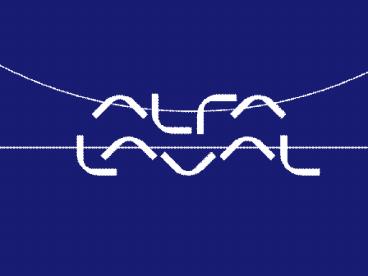Heat%20Transfer%20OH%20Presentation - PowerPoint PPT Presentation
Title:
Heat%20Transfer%20OH%20Presentation
Description:
Heat transfer review What is required to size a heat exchanger Compact heat transfer solutions Plate Heat Exchanger Spiral Heat Exchanger Welded Plate Heat Exchangers ... – PowerPoint PPT presentation
Number of Views:157
Avg rating:3.0/5.0
Title: Heat%20Transfer%20OH%20Presentation
1
(No Transcript)
2
Agenda
- Heat transfer review
- What is required to size a heat exchanger
- Compact heat transfer solutions
- Plate Heat Exchanger
- Spiral Heat Exchanger
- Welded Plate Heat Exchangers
- Specialty Plate Heat Exchangers
- Installation Photos
- Design of Heat Exchanger Solutions
- Order Flow Process
3
Heat TransferBasics
4
Three ways to transfer heat
- Radiation
- Electromagnetic waves
- When it reaches a body it has 3 options
Reflected
Absorbed
Transmitted
- Conduction
- Molecular or atomic vibrations
- No material transport
- Convection
- Energy is transferred by the motion and
intermixing of small mass elements - Natural convection caused by density difference
- Forced convection is man-made (ex., pump)
5
Flow Principles
- Laminar
- Conduction low heat transfer rate
- Turbulent
- Convection high heat transfer rate
- Film layer at the wall - Conduction - Low
heat transfer
6
Data needed to design a heat exchanger
- Flows and temperatures for both sides
- Fluid properties including density, specific
heat, thermal conductivity, and viscosity for at
least two points. - For condensers and evaporators data such as a
condensing curve, boiling point elevation, and/or
other parameters may be required. - Process conditions and limitations such as
system pressure, potential for fouling or
plugging, pressure drop limitations etc. - The supplier may be able to use their
experience to assist in determining proper values
from above.
7
(No Transcript)
8
Heat Transfer
Q m Cp (T - T )
HI
HO
- Where
- Q heat transferred (Kbtu/hr)
- m mass flow rate (hot fluid) (lb/hr)
- C specific heat (hot fluid) (Btu/lb,F)
- T hot fluid entering temperature (F)
- T hot fluid leaving temperature (F)
p
HI
HO
9
Thermodynamics at work!!
Q m Cp (T - T ) m Cp (T - T )
HI
HO
CO
CI
Temperature
Length of Channel
10
Heat Transfer
Q U A (LMTD)
- Where
- Q heat transferred
- U overall heat transfer coefficient
- A heat transfer surface area
- LMTD log mean temperature difference
11
Log Mean Temperature Difference
Temperature
Length of Channel
12
Determining Heat Transfer Area
Q mCp(T T ) U A (LMTD)
HI
HO
Determining Proper U value is the key!!
13
Items That Effect U value and Fouling Tendency
- Channel Geometry (turbulence)
- Fluid velocity and wall shear
- Fluid Properties (particularly viscosity)
- Viscosity also has a major impact on the
pressure drop that will be seen in the
heat exchanger
14
Heat Flow
Hot Fluid
Fouling Layers
Cold Fluid
Metal
Temperature
Temperature
Temperature
Wall
Film Boundary Layers
1 U
1 h
1 h
t k
Rf
Q U A (LMTD)
and
15
Heat Transfer Basics Three Wise Men
h
Nusselt Number
Prandtl Number
Reynolds Number
16
Cocurrent Flow
Lower LMTD and no temperature cross means less
efficiency
Temperature
T
CO
Length of Channel































